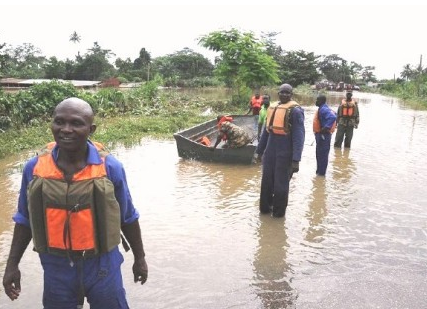Case-study /
Mainstreaming adaptation into Ghana’s national development plans


Responding to flooding in Ghana ©UNDP in Ghana
Project description
SEI assisted Ghana’s Environmental Protection Authority and its climate change focal point to develop a plan for climate change adaptation and mitigation. The plan seeks to strengthen Ghana’s Poverty Reduction Strategy by incorporating consideration of climate change impacts. SEI provided training on planning techniques, including a novel approach to multi-sector planning that was developed by SEI and Ghana EPA staff. The approach has been written up and published in a peer-reviewed journal by Eric Kemp-Benedict and William Kojo Agyemang-Bonsu called “The Akropong approach to multi-sector project planning” in Futures 40 (2008), pp. 834-840.
Project background
The NCAP funded project in Ghana was implemented over the course of three years in two separate phases. The aim of the program’s contribution of technical and financial assistance was to strengthen national capacity in Ghana to respond to the challenges of climate change. The ultimate objective of the Ghanaian proposal was the formulation of climate change policies that are consistent with the Ghana Poverty Reduction Strategy (GPRS), thus facilitating the mainstreaming of these policies into district as well national development plans.
Project outputs
Phase I Key Results: The focus of Phase I activities was on sectoral vulnerability and adaptation assessments. These studies explored vulnerability in relation to a set of climate change scenarios (changes in temperature, precipitation etc.), and proposed adaptation strategies to build resilience against threats associated with climatic variability and change. The following sectors were addressed: human health, fisheries, land management and agriculture (emphasis on cocoa production and root crops such as yam, cocoyam and cassava). A cross-sectoral impact analysis was conducted to assess the extent to which, if any, the proposed sector-specific adaptation strategies reinforced or undermined adaptation objectives of other sector-level activity. Phase II Key Results: The focus of Phase II activities was mainstreaming adaptation concerns into national policy development and project planning. Throughout Phase II, several workshops on cross-sectoral impact analysis and national criteria development and prioritization were held, together with a national stakeholder forum on climate change. These workshops helped to strengthen national capacity regarding the methods and tools for prioritization of adaptation options, as well as integrating stakeholder contributions regarding adaptation strategies/options that were developed during Phase I. Phase II activities were planned to converge on inputs to national adaptation policy and this strong policy-focus is reflected in project outputs.
- External link
- Published journal article
- Citation: Kemp-Benedict. E. and Agyemang-Bonsu.W.K. (2008) “The Akropong approach to multi-sector project planning”,Futures 40 (2008), pp. 834-840.
